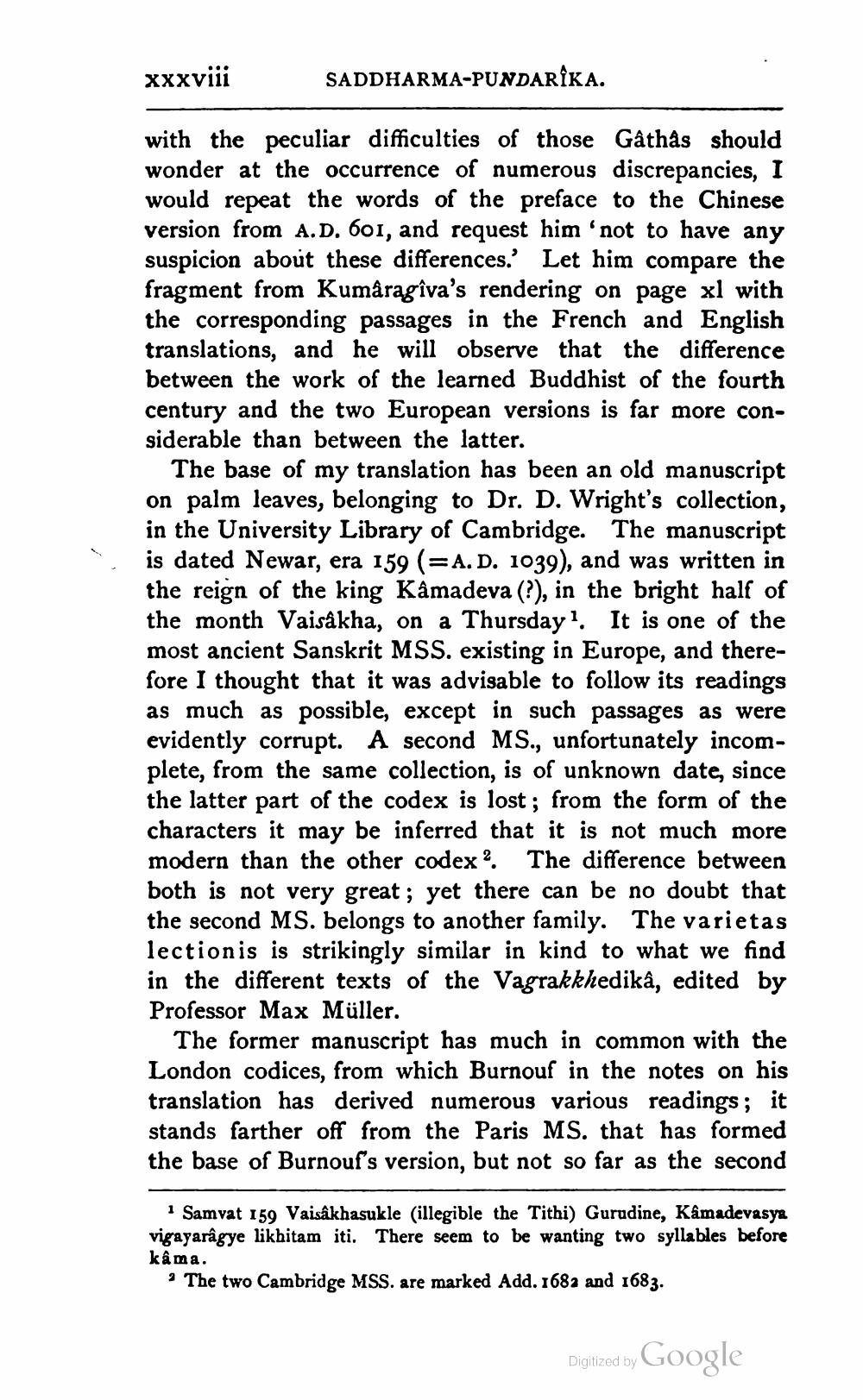________________
xxxviii
SADDHARMA-PUNDARÎKA.
with the peculiar difficulties of those Gâthås should wonder at the occurrence of numerous discrepancies, I would repeat the words of the preface to the Chinese version from A.D. 601, and request him 'not to have any suspicion about these differences.' Let him compare the fragment from Kumârągîva's rendering on page xl with the corresponding passages in the French and English translations, and he will observe that the difference between the work of the learned Buddhist of the fourth century and the two European versions is far more considerable than between the latter.
The base of my translation has been an old manuscript on palm leaves, belonging to Dr. D. Wright's collection, in the University Library of Cambridge. The manuscript is dated Newar, era 159 (=A.D. 1039), and was written in the reign of the king Kamadeva (?), in the bright half of the month Vaisakha, on a Thursday. It is one of the most ancient Sanskrit MSS. existing in Europe, and therefore I thought that it was advisable to follow its readings as much as possible, except in such passages as were evidently corrupt. A second MS., unfortunately incomplete, from the same collection, is of unknown date, since the latter part of the codex is lost; from the form of the characters it may be inferred that it is not much more modern than the other codex? The difference between both is not very great; yet there can be no doubt that the second MS. belongs to another family. The varietas lectionis is strikingly similar in kind to what we find in the different texts of the Vagrakkhedikâ, edited by Professor Max Müller.
The former manuscript has much in common with the London codices, from which Burnouf in the notes on his translation has derived numerous various readings; it stands farther off from the Paris MS. that has formed the base of Burnouf's version, but not so far as the second
1 Samvat 159 Vaisakhasukle (illegible the Tithi) Gurudine, Kamadevasya vigayarâgye likhitam iti. There seem to be wanting two syllables before
kama.
9 The two Cambridge MSS. are marked Add. 1682 and 1683.
Digitized by Google




